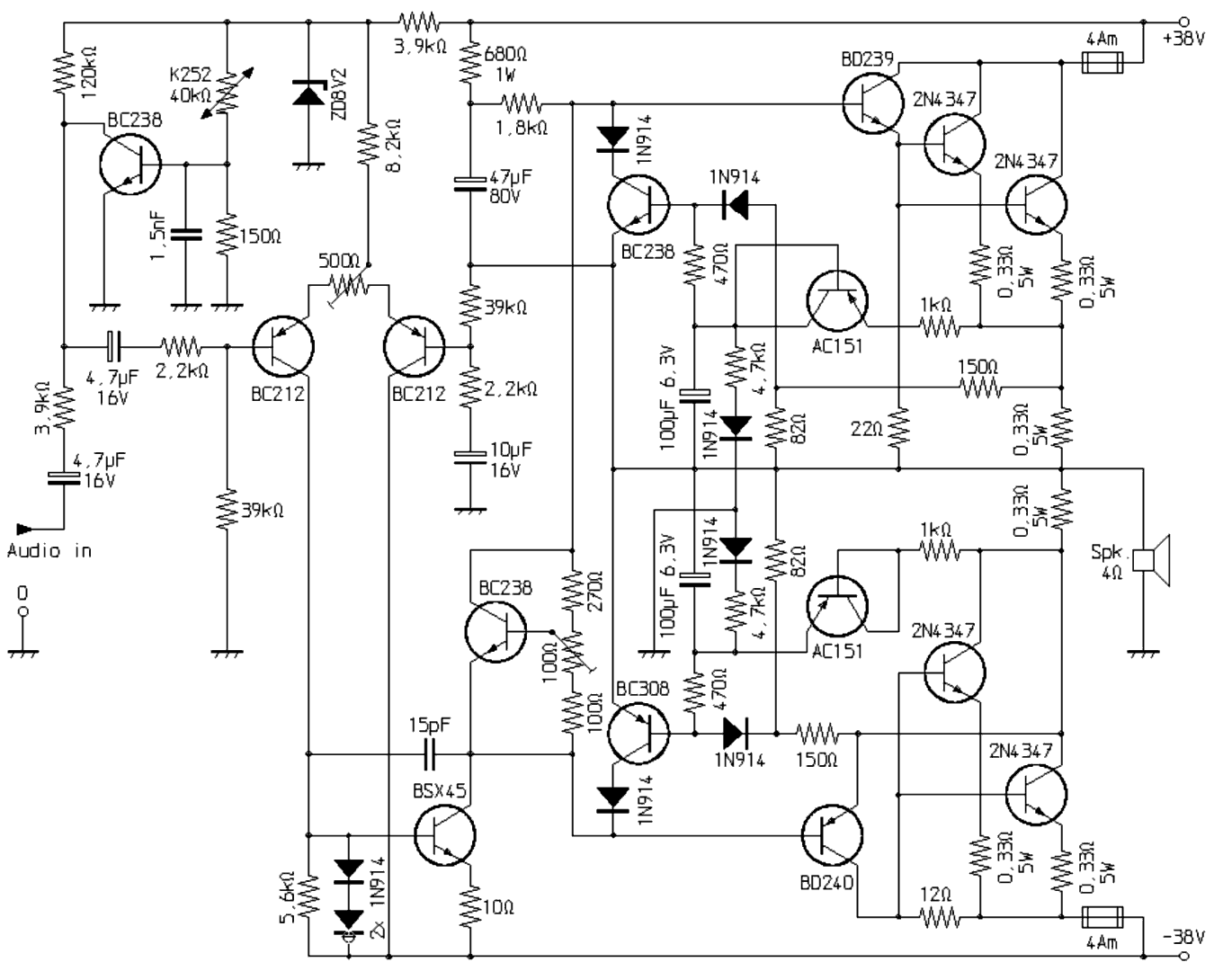60 watt power amplifier with short-circuit and heat protection
In the semiconductor application notes from Siemens appeared in the early 1970s, the circuit proposed for a hi-fi power amplifier. The output power was up to 60 watts. The circuit was characterized by an elaborate protection circuit for the short-circuit operation. It also offered a good protection of the power transistors even with a permanent short circuit. In addition, unlike many other such protection circuits, it caused only little additional distortion. In addition, an over-temperature protection was provided. After the circuit in the magazine Funkschau had been discussed in detail, appeared very soon appropriate kits. A friend of mine used such amplifiers for his rolling disco. He praised the excellent reliability of this amplifier, because he had since using it no more problems with any failures.

Only a short time later, there were also kits and modules for a 120-watt version, which circuit is shown below. With a supply voltage of ± 38 volts and partly slightly different component values, each two 2N4347 end transistors connected in parallel were used here. I had used such a power amp in a DIY hybrid guitar amp. Previously connected was a tube preamp with an EF86 and an ECC83. The EF86 served as input stage. The first system of the ECC83 was circuited as a voltage amplifier to compensate for the losses of the tone control network. The second system worked as a cathode follower to match the output of the tube circuit well to the input of this power amplifier. Even with me, this amplifier proved to be extremely reliable.
For the sake of completeness here are hints for adjusting and replica, based on the 60 watt version. With the 250Ω trimmer the voltage at the loudspeaker is adjusted to exactly zero volts (so-called zero offset adjustment). The 1kΩ trimmer is used to adjust the output stage bias current. To do this, disconnect the collector connection of the upper BD130 in order to insert a current meter. It is then set without existing input signal, a current of about 100mA. Incidentally, the types BD183 or 2N3055 can also be used instead of the BD130. In the latter, however, there were at times relatively large differences in quality, which in extreme cases, even the reliability of this amplifier could call into question. With good branded products (e.g., RCA), such problems did not exist.
